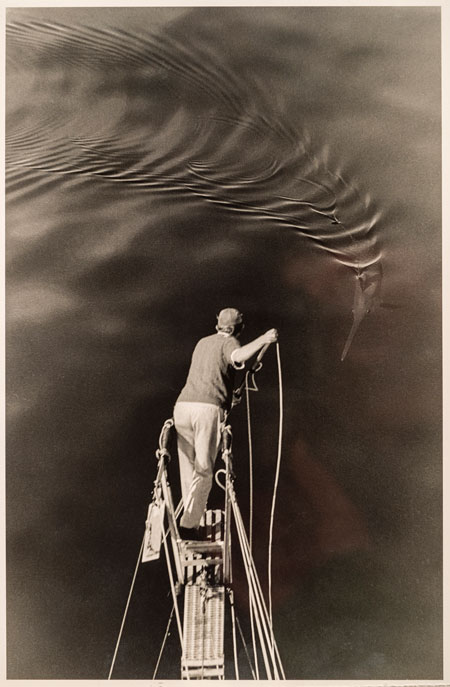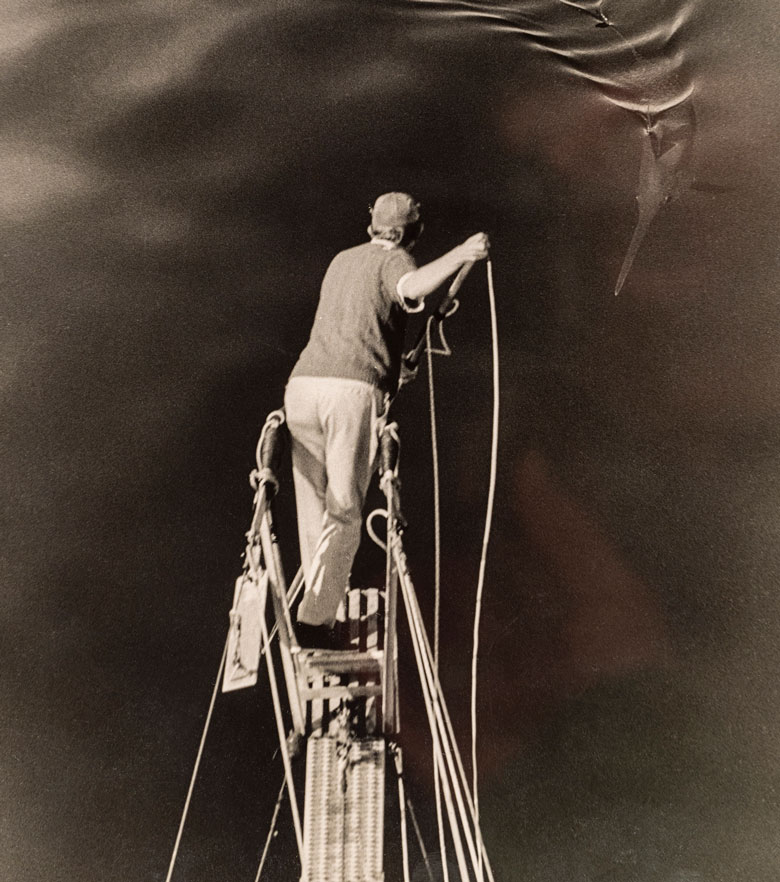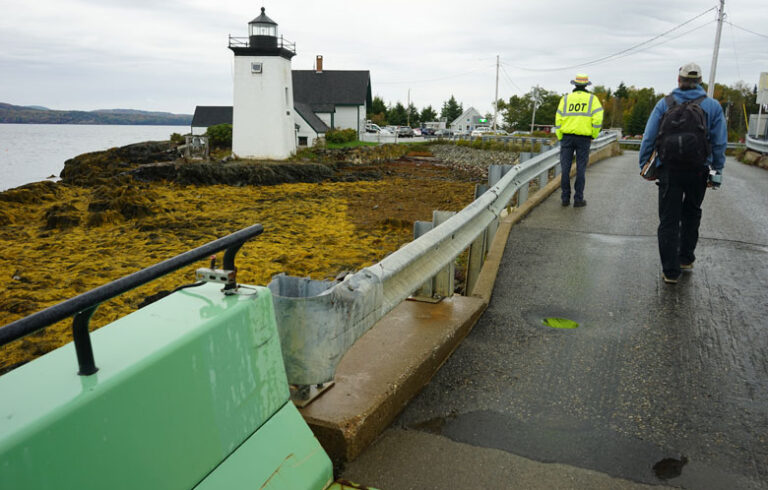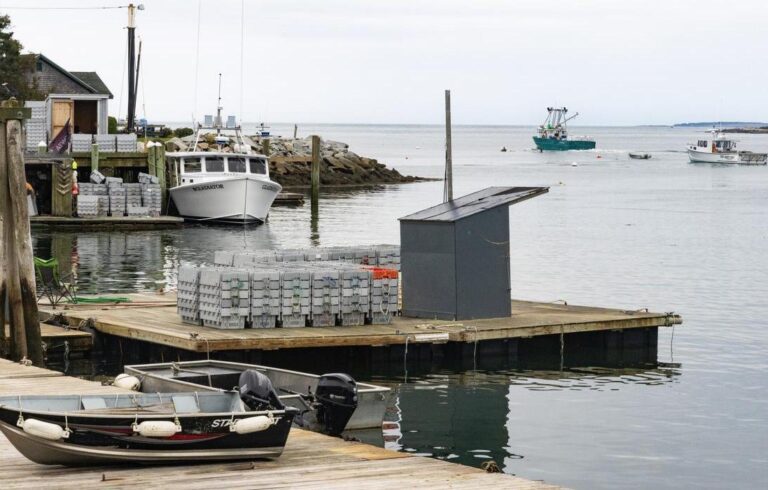Harpooner Dave Brayton stands in the “pulpit” of the Harry Glen and eyes his quarry, a 200-pound Georges Bank swordfish. The sight of the classic man vs. nature conflict playing out is an arresting one to be sure.
The tension is palpable. It took place in August of 1981 when Chris Cornell left his editor’s desk at National Fisherman to join a seven-day swordfishing venture to the northern edge and northeast peak of Georges Bank.
Prior to becoming a journalist, he had been a commercial swordfish fisherman, so he knew what to expect and what scenes he wanted to capture. Despite that plan, he still had to work hard to get the shot that wound up on the cover of National Fisherman in January 1983.
Harpooning, or “ironing” swordfish has been an effective method of landing the large fish since humans first fished them.
Harpooning, or “ironing” swordfish has been an effective method of landing the large fish since humans first fished them. The Red Paint People, an indigenous culture in Maine and Canada, were well documented swordfish hunters.
Swordfish are known to spend time near the surface “finning” or “clipping,” a behavior marine biologists believe evolved as a means for warming up and digesting food after spending most of their time in deep, frigid waters. It is during this period of rest when they are most vulnerable.
This type of selective fishing is considered sustainable, as there is no bycatch and no small fish taken. It also takes a lot of experience and skill to do!

The trip began in Newport, R.I., and it was a rough ride to get to the fishing grounds. They even had to spend a night in Yarmouth, Nova Scotia to weather a storm, but it was worth the wait. The surface of Georges Bank was like glass on the morning they arrived, and with the help of a spotter plane, they found fish.
Cornell knew he wanted to capture the moment when the harpooner and the swordfish were face to face. He had numerous chances that day, but the perfect shot was elusive until he found an ideal vantage point atop the pilot house.
He used a polarizing filter to help lessen the glare on the surface so the swordfish could be clearly seen; those preparations, coupled with some savvy darkroom work, produced the cover shot. This was a big score for the photographer, as it paid four times more than an interior image and conveyed bragging rights to boot.
The well-known French photographer, Cartier Bresson, coined the phrase “decisive moment” to describe the frozen moment in time when the photographer and his/her subject unite. He once said, “To me, photography is the simultaneous recognition, in a fraction of a second, of the significance of an event as well as of a precise organization of forms which give that event its proper expression.”
In this case, Cornell nailed it.
This photograph is one of a hundred featured in Michael Crowley’s new book Working the Sea that draws from the National Fisherman Collection; the collection is archived at the Penobscot Marine Museum. You can order your copy here.
Kevin Johnson is photo archivist at the Penobscot Marine Museum in Searsport. The museum will open a major new exhibit, Sardineland, in May.





